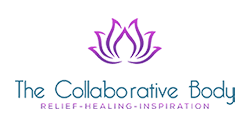 Dawn* has a very interesting story.
Dawn* has a very interesting story.
TMJD was just the beginning of Dawn’s problems. She had a high-pressure job, or maybe she just put a lot of pressure on herself. In either case, she spent two decades battling one illness after another.
While she was busy climbing the corporate ladder and building a life for herself, she was plagued with persistent illnesses, nothing inherently life-threatening but nonetheless challenging.
Dawn was confused and frustrated, because she believed she had a healthy lifestyle and took good care of herself.
Dawn experienced one problem after another.
In her twenties, she was diagnosed with TMJD. She also suffered from Irritable Bowel Syndrome, GERD, and chronic respiratory conditions, such as sinus infections and bronchitis.
In her thirties, she also contracted environmental allergies that required the use of steroid inhalers and oral medication. The last straw was being diagnosed with idiopathic pelvic pain and PMDD.
Pain could strike at any time without warning.
The constant uncertainty of whether Dawn would be able to work or attend a social function was nearly as disabling as the medical conditions themselves. She became anxious and depressed that no matter what she did, she could not improve her health.
Dawn went through a series of specialists and treatment courses that included oral and injected medications that were all aimed at suppressing the symptoms.
After battling her body for two decades, she gave in, gave up, and had a hysterectomy at age 40.
Dawn decided to seek alternative healthcare options, and she made a big discovery.
There had to be ways to improve health without medications, injections, and surgeries. She began researching and studying natural health.
She learned that stress suppresses health by adversely impacting many of the body’s functions, particularly the immune system. Dawn discovered that her high levels of chronic stress set her up for chronic disease.
 Stress has physical consequences.
Stress has physical consequences.
Dawn changed her life and that’s when her health improved.
Dawn began getting light touch therapy and began to see improvement in her stress levels. As she learned more about her body’s stress response, she made choices that reduced stress and promoted better health.
Keeping her central nervous system in balance with light touch therapy has enabled Dawn to maintain lower stress levels. Dawn no longer suffers from the many illnesses that disrupted her life. She no longer takes any medication for symptoms, because they no longer exist.
Many of us live with very high levels of stress, and we accommodate it without much conscious thought. However, stress is cumulative; as we saw in Dawn’s case, it was perhaps the underlying root cause for her many illnesses.
Finding balance from stress is possible.
Light touch therapy, also called CranioSacral Therapy (CST), is an excellent way to reduce stress by helping the body rebalance itself away from the stress response.
CST is a gentle approach that releases tensions in the Central Nervous System to allow the body to relax and self-correct.
If you are struggling with persistent chronic illnesses and high stress, CST may be a good option for you.
Contact me to schedule your complimentary consultation to find out more about how manual therapy may be able to help you.

